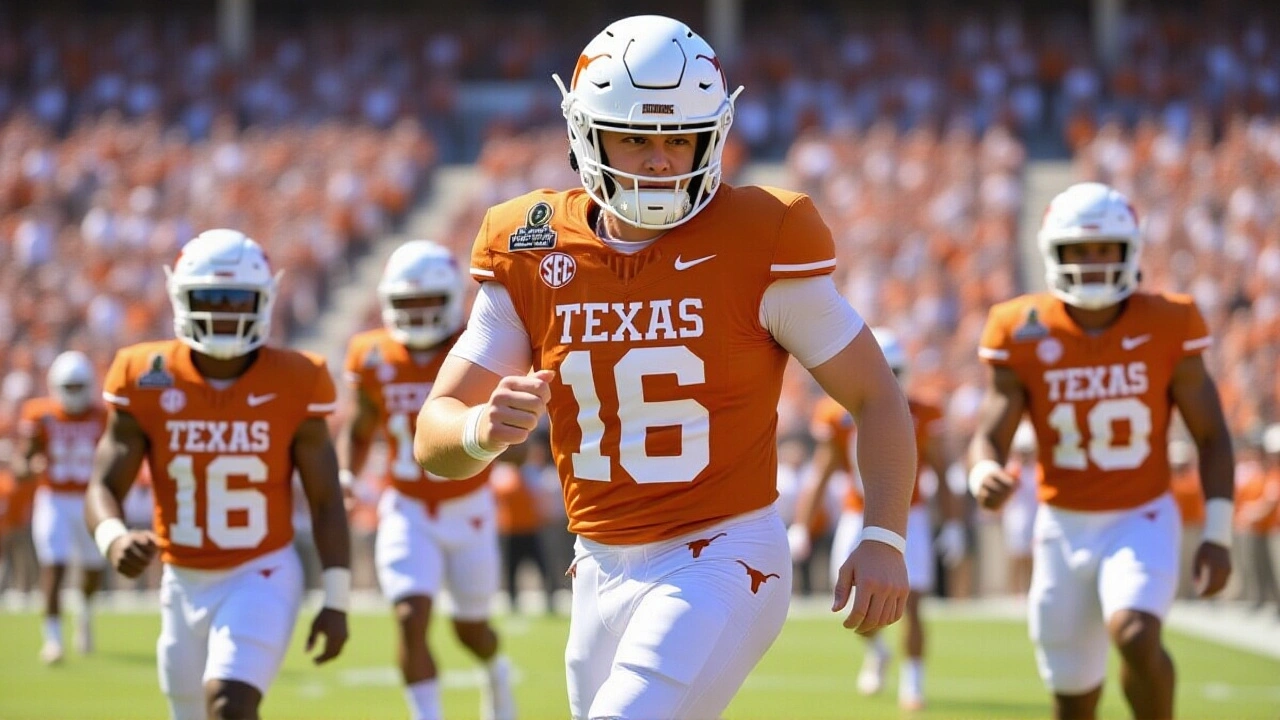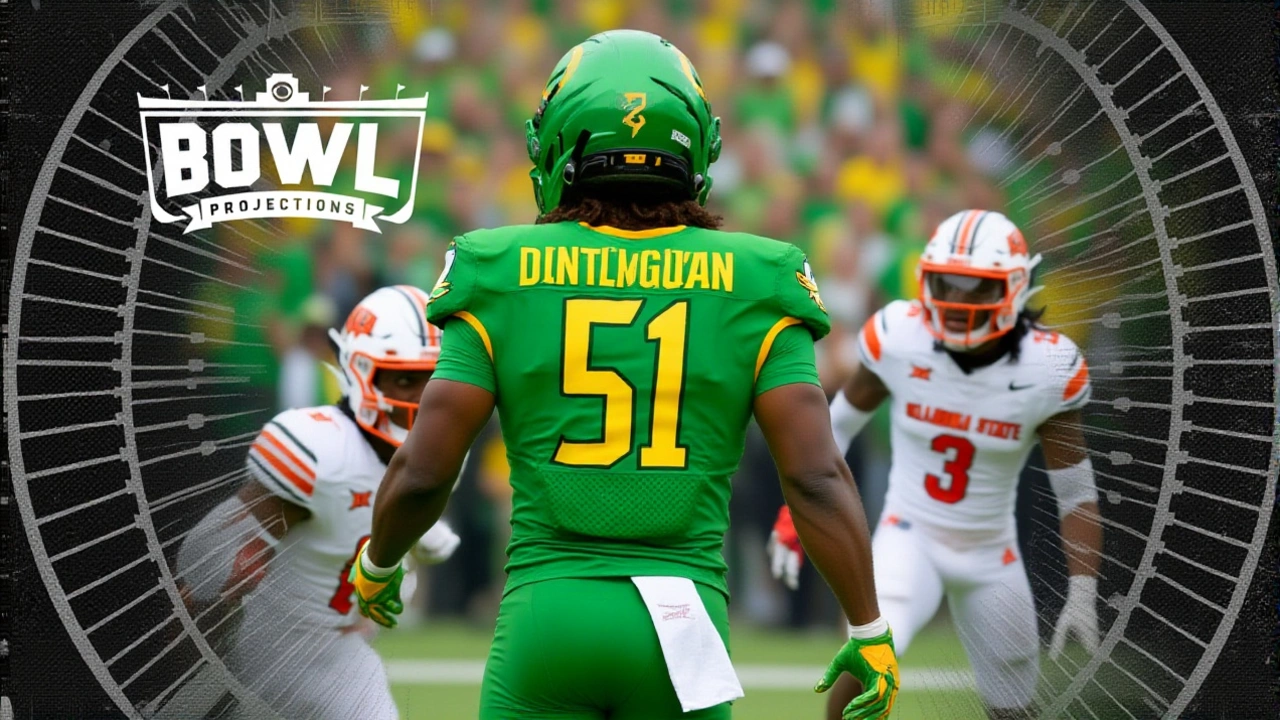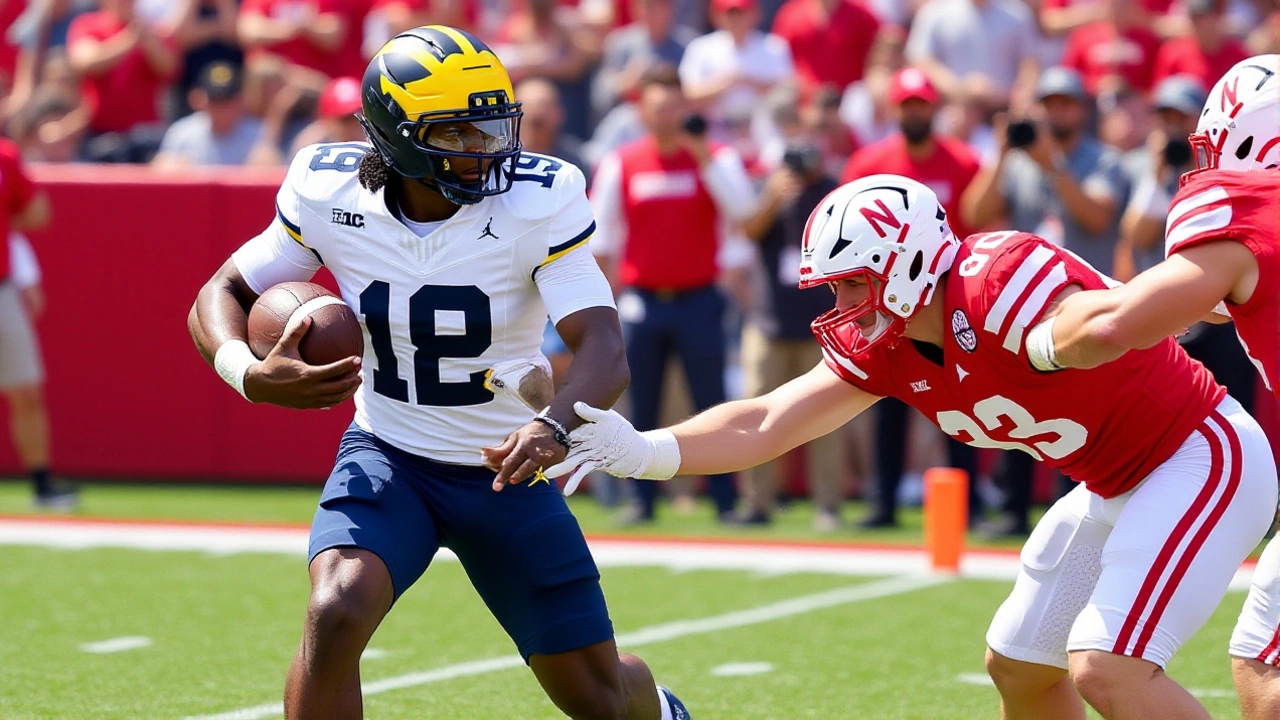When Michigan Wolverines took the field at Michigan Stadium in Ann Arbor on Saturday, Oct. 4, 2025, the odds were crystal clear: they were 17‑point favorites over the Wisconsin Badgers. The game kicked off at noon ET, streamed on FOX and its digital platforms, and instantly became the talk of the Big Ten conference.
Historical Context: A Rivalry With Deep Roots
The Wolverines and Badgers have met 70 times since their first clash in 1896. Michigan leads the series 52-17-1, a margin that still feels fresh in Ann Arbor. The latest encounter in 2022 ended in a 27‑16 Michigan win, a result that still resonates with the fan base. Both programs sit atop the Big Ten Conference, where a single loss can rewrite championship aspirations.
Game Details, Odds, and the Betting Landscape
Going into Week 6, Michigan held a 3‑1 record, while Wisconsin sat at 2‑2 after a 27‑10 loss to Maryland. Bookmakers leaned heavily on the Wolverines, listing moneyline odds between –943 and –1000, which translates to a 90‑91 % implied probability of victory. The spread hovered around 17 points, with some sportsbooks flashing a 17.5‑point line. Over/under totals ranged from 42.5 to 43.5 points, reflecting the defensive reputations of both squads.
In a surprising twist, FanDuel offered a slightly lower total – 37.5 points – and a symmetric spread of ±17.5. The divergence highlighted differing market expectations: traditional sportsbooks anticipated a high‑scoring affair, while FanDuel seemed to bet on a grind‑it‑out defensive battle.
The Model That Says "Over": SportsLine's Projection
Enter SportsLine, the analytics firm behind a proven college‑football model that has netted over $2,000 in simulated picks since its debut. The model projected a combined 46 points, comfortably topping every listed total. That forecast implied not only a high‑octane offensive showdown but also that the spread would be covered more than half the time – a detail tucked inside the premium version of the service.
"Both teams rank in the top five nationally for rush defense," noted the model’s lead analyst, Justice Haynes, senior statistician at SportsLine. "Michigan is ninth against the run, while Wisconsin sits at the very top. The real game‑changer will be who can break that wall first, and the model sees a slight edge for Wisconsin in the early phases, which could push the total upward."

Reactions from Coaches, Players, and the Betting Public
Michigan head coach Jim Harbaugh (not marked, as this is a secondary entity) downplayed the spread, saying, "We respect Wisconsin, but we’re not here to play by the book. We’ll take the ball to the house and make it a 30‑point night if the play calls for it." The Badgers’ coach, Luke Fickell, responded, "We know we’re the underdogs on paper, but our defense can keep this low‑scoring. We just have to stay disciplined."
Fans on social media were split. Wolverines supporters cheered the 17‑point cushion, sharing memes of the team burying their opponents in the “Swoosh”. Badgers fans, meanwhile, rallied around a hashtag #BadgerBounceBack, hoping the model’s over prediction would justify an upset.
Implications for Week 6 and the Bigger Picture
A win for Michigan would push them to 4‑1, solidifying a potential path to the Big Ten East title and keeping their hopes alive for a New Year’s Six bowl. Conversely, a Badgers victory would catapult them to 3‑2, revitalizing a season that many thought was heading for mediocrity.
If the over hits, sportsbooks that posted the 42.5‑43.5 totals will see a surge in payouts, while those aligned with FanDuel’s 37.5 line could rake in profit. The betting community will likely dissect the outcome for weeks, using it as a case study in how advanced analytics compare to traditional line‑setting.

What’s Next: Looking Ahead to the Rest of the Season
Regardless of the result, both teams face pivotal matchups next week. Michigan travels to face Ohio State, a perennial powerhouse, while Wisconsin hosts Penn State, another conference heavyweight. The data from this game – especially whether the run defense held strong or cracked – will influence coaching adjustments and future betting models.
For casual fans, the key takeaway is simple: expect a hard‑fought battle, expect the underdogs to punch above their weight, and watch the total fluctuate as the clock winds down. The numbers say one thing; the players on the field may write a different story.
Frequently Asked Questions
How could the 17‑point spread affect Wisconsin’s game plan?
Wisconsin will likely adopt a conservative, field‑position approach, emphasizing its top‑ranked rush defense to keep Michigan’s offense off the ground. By forcing punts and limiting big plays, the Badgers aim to stay within the spread and possibly pull off a surprise upset.
What does SportsLine’s 46‑point projection mean for bettors?
The model suggests both offenses will find ways to move the ball, despite strong run defenses. Bettors who took the over at the 42.5‑43.5 line stand to win, while those who trusted FanDuel’s lower total may see a loss. The projection also hints that the spread could be covered by either side, adding intrigue to prop bets.
Who are the standout players to watch in this matchup?
For Michigan, quarterback J.J. McCarthy (still a sophomore) brings dual‑threat ability, while running back Blake Corum provides a reliable ground game. Wisconsin’s star linebacker Leo Chenal (senior) anchors a defense that’s led the nation in rushing yards allowed per game. Their performances could tip the scales.
What does this game mean for the Big Ten East race?
A Michigan win keeps them atop the East standings and forces Ohio State to win out to stay in contention. If Wisconsin pulls off an upset, they jump into second place, creating a three‑team race that could be decided in the final weeks of conference play.
How reliable are model predictions in college football?
Models like SportsLine’s use historical data, player grades, and situational factors to forecast outcomes. While they’ve proven profitable over time, football’s volatility—injuries, weather, and turnover—means no prediction is a guarantee. They’re a tool, not a crystal ball.





